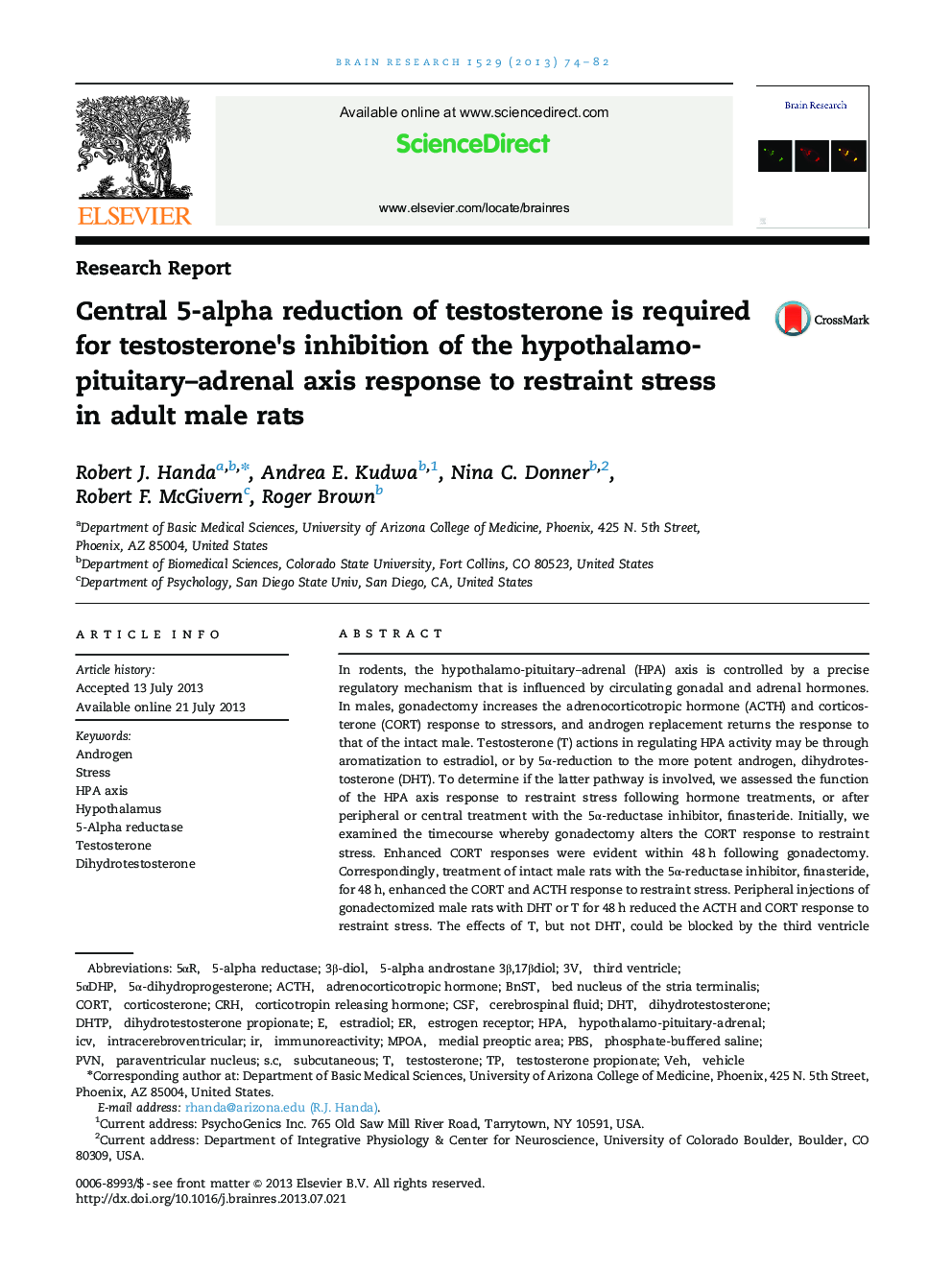| Article ID | Journal | Published Year | Pages | File Type |
|---|---|---|---|---|
| 6263765 | Brain Research | 2013 | 9 Pages |
â¢Restraint stress- induced increases in plasma corticosterone are augmented after orchidectomy.â¢Treatment of intact males with finasteride enhances restraint stress-induced corticosterone.â¢Androgen treatment reduce the restraint stress-induced increase in plasma corticosterone.â¢Finasteride treatment blocks testosterone's ability to reduce corticosterone.
In rodents, the hypothalamo-pituitary-adrenal (HPA) axis is controlled by a precise regulatory mechanism that is influenced by circulating gonadal and adrenal hormones. In males, gonadectomy increases the adrenocorticotropic hormone (ACTH) and corticosterone (CORT) response to stressors, and androgen replacement returns the response to that of the intact male. Testosterone (T) actions in regulating HPA activity may be through aromatization to estradiol, or by 5α-reduction to the more potent androgen, dihydrotestosterone (DHT). To determine if the latter pathway is involved, we assessed the function of the HPA axis response to restraint stress following hormone treatments, or after peripheral or central treatment with the 5α-reductase inhibitor, finasteride. Initially, we examined the timecourse whereby gonadectomy alters the CORT response to restraint stress. Enhanced CORT responses were evident within 48 h following gonadectomy. Correspondingly, treatment of intact male rats with the 5α-reductase inhibitor, finasteride, for 48 h, enhanced the CORT and ACTH response to restraint stress. Peripheral injections of gonadectomized male rats with DHT or T for 48 h reduced the ACTH and CORT response to restraint stress. The effects of T, but not DHT, could be blocked by the third ventricle administration of finasteride prior to stress application. These data indicate that the actions of T in modulating HPA axis activity involve 5α-reductase within the central nervous system. These results further our understanding of how T acts to modulate the neuroendocrine stress responses and indicate that 5α reduction to DHT is a necessary step for T action.
